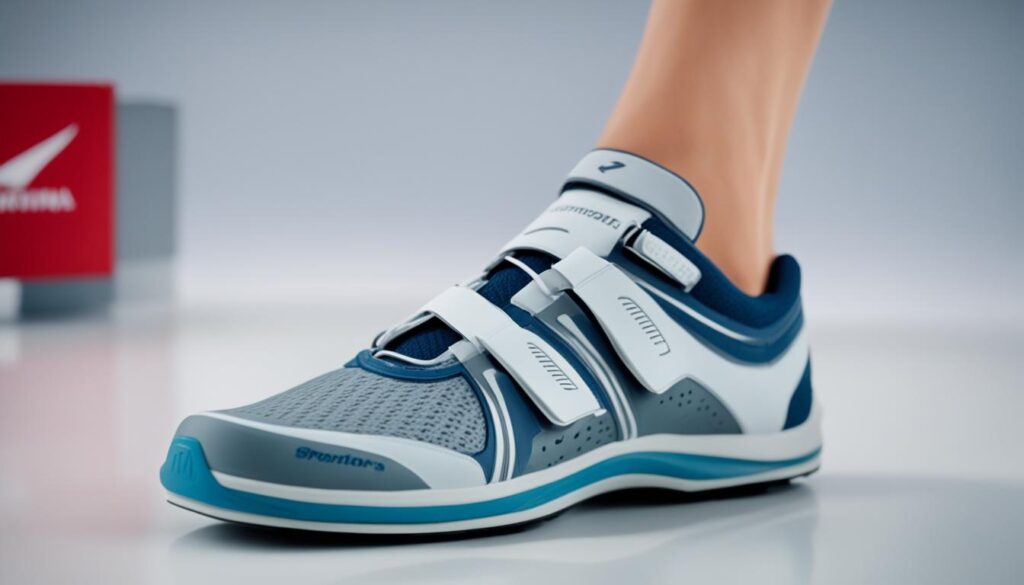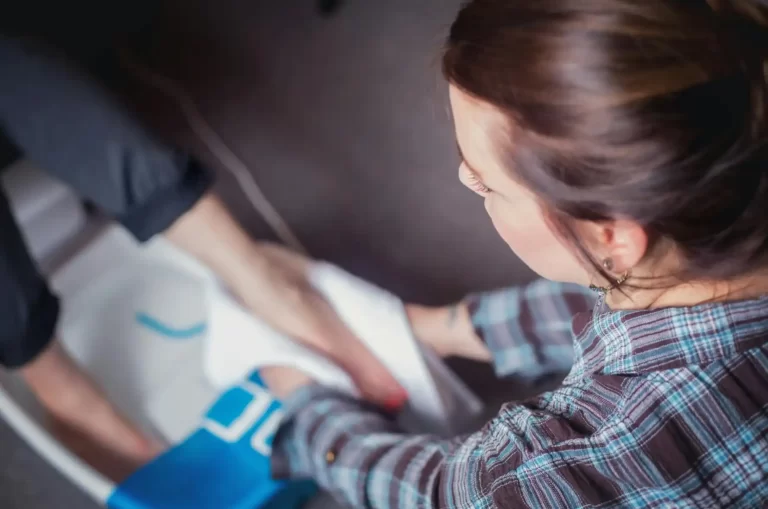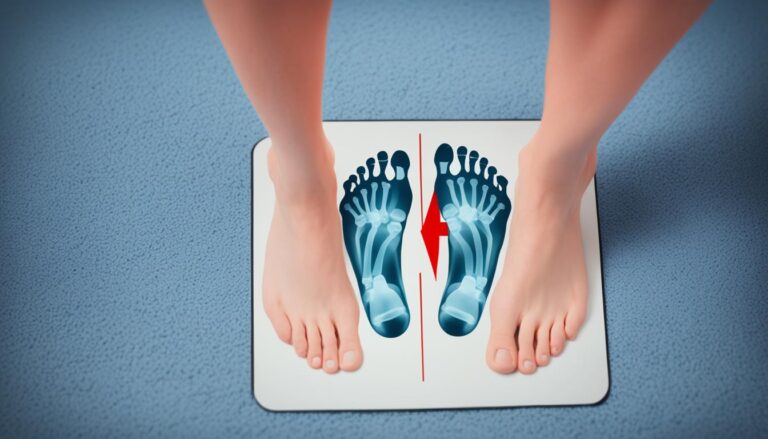Treatments for Morton’s Neuroma: Effective Solutions
Did you know over 200,000 Americans get diagnosed with Morton’s neuroma yearly? It’s a painful issue that happens when the nerve tissue between toes thickens. It can really lower someone’s quality of life. But, there are many treatments, remedies, and therapies for Morton’s neuroma that help ease the pain and manage the condition.
We will dive into the many treatments for Morton’s neuroma in this guide. We’ll look at conservative methods, home remedies, surgery, and injections. Knowing about different therapies will help you and your doctor pick the best one for you. This can make dealing with Morton’s neuroma much easier.
Key Takeaways
- Morton’s neuroma is a common and painful condition affecting the nerves between the toes.
- There are various effective treatments available, including conservative therapies and surgical options.
- Proper footwear, orthotics, and injections can provide relief for many individuals with Morton’s neuroma.
- In some cases, more advanced treatments like surgery or radiofrequency ablation may be necessary.
- Preventing recurrence through lifestyle changes and proper footwear selection is crucial for long-term management.
Conservative Treatments for Morton’s Neuroma
When dealing with Morton’s neuroma, starting with conservative treatments is key. These methods don’t involve surgery. They aim to reduce pain and stop the condition from getting worse.
Let’s look closely at some of the main conservative treatment options.
Footwear Modifications
The right shoes are very important for dealing with Morton’s neuroma. Shoes that are wide in the front and have good padding can help. They lower the pressure on the nerve, which reduces pain. With the right shoes, the weight is spread evenly, and there’s less rubbing. This leads to less discomfort for those with Morton’s neuroma.
Orthotic Devices and Padding
Using inserts and orthotic devices can also be helpful. They support the foot and ease the pain from Morton’s neuroma. These foot supports can be custom made or bought off the shelf.
They keep your feet in the right position, lower the stress, and add a cushion. This helps make walking, running, or just standing more comfortable.
Morton’s Neuroma Injections
Corticosteroid shots are another treatment for some people. These shots can reduce swelling and pain for a while. They don’t solve the problem forever, but they can be a big help in your treatment.
This conservative approach lets many Morton’s neuroma patients control their symptoms without surgery. It’s all about wearing the right shoes, using foot supports, and considering shots carefully.
Treatments for Morton’s Neuroma
If simple treatments don’t work for morton’s neuroma, more advanced methods are available. These include surgeries like neuroma excision and decompression. By removing or releasing the affected nerve, these surgeries ease the pain of morton’s neuroma.
Surgical Options
Doctors might suggest surgery for morton’s neuroma after trying other treatments. Surgery aims to fix the problem at its source. This is done by taking out the thickened nerve tissue (neuroma excision) or easing the pressure on the nerve (decompression).
Such procedures often bring long-term pain relief. They also help get the foot working normally again for people with morton’s neuroma.
Non-Surgical Treatments
Not all cases of morton’s neuroma need surgery. Some are well managed with non-surgical methods. Techniques like radiofrequency ablation and cryotherapy offer direct relief by targeting the nerve.
These methods aim to interrupt the pain signals from the nerve. This means they can be a good choice for patients who prefer not to have surgery, or when other treatments didn’t work.

Preventing Morton’s Neuroma Recurrence
To keep a healthy lifestyle and avoid Morton’s neuroma from coming back, you should make some changes. Focus on preventing Morton’s neuroma by adapting how you live and choosing the right Morton’s neuroma footwear. This can help you manage the condition well.
Lifestyle Changes
Staying at a healthy weight and doing exercises that don’t strain your feet are key. Being overweight puts more stress on your feet, which can make Morton’s neuroma worse. Eat well and try activities like swimming or biking. These can lessen the pressure on your nerves and stop the irritation.
Proper Footwear Selection
Choosing the proper Morton’s neuroma footwear is essential in stopping it from returning. Go for shoes that are roomy in the toe area, have good padding, and support your feet well. Steer clear of high heels, tight shoes, and ones that are too flat. Such shoes can help avoid making Morton’s neuroma worse.

Make these Morton’s neuroma lifestyle changes and pick the right Morton’s neuroma footwear. These moves are key in keeping Morton’s neuroma away for good and preserving your foot health long-term.
Insoles for Morton’s Neuroma
Insoles designed specifically for Morton’s neuroma relief are an excellent option for managing the symptoms and providing much-needed support. These insoles are designed with cushioning and targeted padding to alleviate pressure on the affected area, reducing pain and discomfort. By redistributing pressure and supporting the foot’s natural arch, these insoles can help alleviate symptoms and promote healing.
Aside from using specialty insoles, several other Morton’s neuroma remedies can be incorporated into a management plan. Regular stretching exercises aimed at improving foot flexibility and strength can be beneficial. Additionally, wearing wider shoes with ample toe room can help relieve pressure on the affected area. Always consult with a healthcare professional for proper evaluation and diagnosis before attempting any home remedies.
Conclusion
In conclusion, we’ve looked at different ways to handle Morton’s neuroma. This can make people’s feet hurt a lot. We saw ways like changing shoes or using special insoles. There are also surgeries for more serious cases.
Doctors and patients work together to choose the best morton’s neuroma treatments. They look for what works best for each case. This can be through simple actions or more complex treatments.
Getting better might need more than one type of treatment. But, with a good plan and help, those with Morton’s neuroma can feel better. They can go back to doing what they love with less pain. Staying informed helps us make the best choices for treatment.







